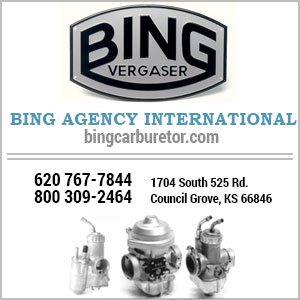R90/6 rebuild. Carb work question
Hi everyone!
I have just joined the group after speaking to a number of great guys who have helped me with my bike (Thanks Dave, Mike and Neal).
I recently got a 1975 bmw R90/6 that was in great shape but had sat unridden for two years. It would start but had trouble idling (high idle, would tend to die if you gave it a little gas). In order to keep it running you had to give it a lot of gas. It also seemed like one side was working harder than the other side (previous owner suggested carbs were not in sync).
So far I:
-checked the valves (got them to spec in manual)
-checked/replaces the points (the gap was a bit hard to measure, got it as close as I could)
-replaced fuel lines
-began carb rebuild.
For the carb rebuild I only got the kit with the orings and the gaskets and ran into an issue:
-on one side when I tried to take the throttle off the throttle shaft (after grinding down the back) I stripped one of the bolts, and cannot get the other out. I ordered a new shaft and new bolts, but don’t know how to get the other ones out.
-one of the carbs I found out has a hole in it, that prior owner sealed up with something, but I thought it was dirt and peeled off. (Wondering if anyone knows where I can JB weld this carefully, trying to avoid buying an expensive carb body).
Final question:
-the bottom of oil pan always has a bit of oil in it after I get it running. Not sure where this is coming from, could this be the seal on the pan on the bottom? (Pic attached)
If you guys have any tips or suggestions please let me know, as of today I’m still struggling to get this thing running.
Thank you!!
Hi, and welcome aboard ! Very nice looking bike ! Well worth your efforts. Congrats !!
I'm no expert, but will try my best to help...
► Yes, JB Weld can be used to seal up holes in the carb bodies. The surface needs to be VERY clean and free of all oil and fuel. You might try the bathroom cleaner called "Scrubbing Bubbles" which will slightly etch the surface and make the epoxy grip. (That stuff is also good on engine exteriors and aluminum wheels.)
► I have never had the need to extract the throttle shaft during a carb rebuild. Your issue seems to be with clogged jets (located in the float bowl) and not the butterfly valve. If the shaft won't turn, then use some heat and penetrating oil until is does, then move on to the jets. While I understand you want to do a good job, this comes under the heading "If it ain't broke, then..."
► The symptom of needing more fuel suggests 1) an air leak, and/or 2) clogged jets.
1) Due to advanced age, all the rubber parts are highly likely to crack making small air leaks, so you'll want to replace the diaphragm and the carb-to-head rubber intake hose.
2) The small #45 idle jet will need to be replaced because it's too small to clean. Both the needle and the needle jet will also need replacing, but mostly because they get banged up over the course of time. (You MUST measure the exposed length of the old needles to insure both new needles get back to the same notch/ installed length.) There is also a fuel jet in the corner of the float bowl for the "choke" which will need cleaning. The main jet can be cleaned with a wooden tooth pick and re-installed.
► As with any carbs this age, it is traditional to replace the float, float needles, all o-rings, and float bowl gaskets. Warning: Bing float bowl gaskets shrink after touching fuel, so you either need to get the float bowl back on AQAP, or buy lots of them.
► You will want to run only name brand "high test" fuels listed in the Top Tier Gas fuel list ( http://www.toptiergas.com/ ) and this needs to be assisted by a cleaner/stabilizer that goes by the name of StarTron ( http://www.starbrite.com/startron ). These will work together to clean your tank, petcocks, carbs and intake.
► I highly recommend that you also replace the spark plug wires with 2 new METAL core wires, 2 new NGK 5K Ohm caps, and 2 new NGK BP7ES plugs.
► Due to wear in the auto advance unit and AAU spring stretch, I highly recommend that you use a strobe lamp to set the ignition timing at high RPM using the "F" mark. Do not static time the ignition as outlined in the owner's manual on the "S" mark, again due to age.
► Once the timing is correct, and the pilot screws set to 1.5 turns out, then you can fully warm the bike and use This Home Made Sync Tool to set the idle speed to 1000 RPM and the cable lengths at 2000 RPM.
► Your oil leaks are simply the result of aging seals and aging gaskets, which you can replace as you go. I highly recommend the use of LocTite 510 gasket maker on new paper gaskets and drain plugs. As things get sealed up, it will become easier to spot the offending areas that need more attention. One very common area of leakage is the 4 rubber push rod tube seals which simply harden with age. This is an easy job, but requires taking off both cylinders. I highly suggest you put at least 500 hundred miles on the bike before attempting this repair.
Hope this helps.
Owning an old Airhead is easy.
Keeping an old Airhead running great is the true test.
- 27 Forums
- 1,801 Topics
- 10.2 K Posts
- 5 Online
- 5,524 Members









